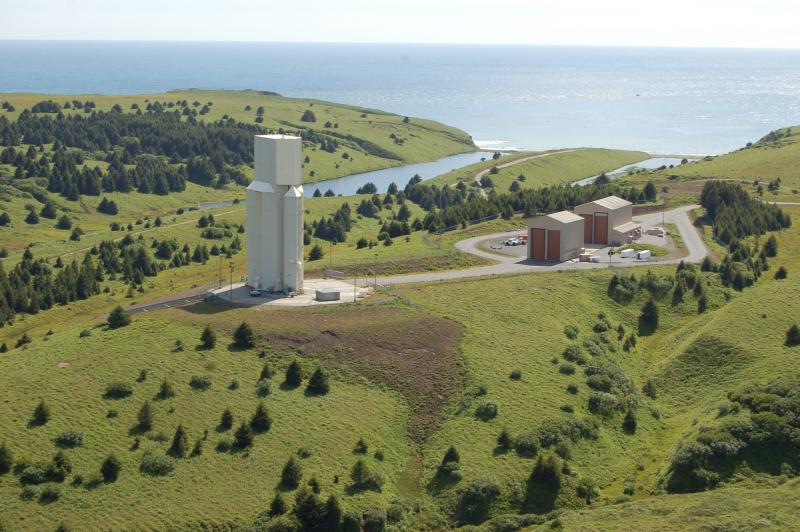Latest News
[Via Satellite 08-26-2016] The Alaska Aerospace Corp. (AAC), which oversees the Pacific Spaceport Complex – Alaska (PSCA), formerly called Kodiak Launch Complex, is looking to woo small satellite launchers to bring commercial business to the facility. While the AAC has traditionally targeted large, government contracts, the company is also working with two private micro-launch companies, Rocket Lab USA and Vector Space Systems, for commercial launches from PSCA as early as next year. Although AAC has not yet signed any contracts with these two launchers, agreements of this kind will be indicative of the spaceport’s path forward as a flexible and cost-effective site for light launchers catering to the SmallSat market.
“We have seen that the emerging small, ultra-small and very low-cost industry has a need that is not being met by the traditional facilities because of cost, because of scheduling, etc. We are looking to carve a niche to provide the services they need at very low cost,” said AAC President and CEO Craig Campbell.
PSCA recently reopened after a 2014 launch failure during a military weapon test caused an estimated $35 million in damage to the facilities. While the rebuild is still underway for non-vital facilities, the complex is ready to begin launching again and is on track to do so with a recently signed multi-year contract with the U.S. Air Force Missile Defense Agency (MDA) for launches through 2021.
Lockheed Martin was in discussion with AAC about launching its small-to-medium-lift Athena rockets from PSCA, but Campbell said a contract resulting from those talks did not materialize. Lockheed Martin has invested in Rocket Lab, which may signal a new direction for the company in SmallSat launch. Campbell pointed to Rocket Lab, which has intentions of beginning launches with a small satellite launch vehicle called Electron within the coming months, as an example of the unique requirements of these new entrants. Rocket Lab advertises launches at a rate of $4.9 million per launch in order to gain SmallSat launch customers, which aggressively seek out low cost options.
“If it’s only $4.9 million, they can’t pay very much for the spaceport to get that rocket into orbit; it has to be in the hundreds of thousands of dollars not the millions of dollars. So we are tailoring ourselves to be able to be profitable servicing that type of a market at an ultra-low-cost capability,” said Campbell.
| Interested in reading more stories like this? Sign up to our satellite news feed to get the latest satellite industry news right to your inbox! |
AAC is aiming to service this market not only through its current launch facility in Alaska, but also through a series of new services it’s hoping to bring to market in the near future. According to Campbell, the company is looking into a plan to develop a commercial launch services subsidiary that can provide inexpensive and contracted launch services at other ranges. The AAC is looking to provide launch services to SmallSat launchers at about 10 percent of the total launch costs.
To dovetail with those extended services, the company is also looking to set up another smaller launch complex in the Pacific Ocean that can service equatorial launches.
“From Alaska, we are so far North we can only reach polar orbits because we can’t launch over land, and we would need to launch over Canada and Alaska to launch equatorial. So, we are looking to establish an equatorial site somewhere in the Pacific Ocean. We are looking at a number of locations to establish a very small launch complex capable of Firefly Alpha, Rocket Lab Electron, or Vector Space Systems-type launches,” said Campbell.
According to Campbell, the equatorial launch complex would allow AAC to offer customers a single contract, a set of procedures, a way of doing business, and one site layout that is the same at both locations for both equatorial and polar launches. This way, if a launcher has a contract with a satellite operator that requires a mix of polar and equatorial launches, the AAC can support them in delivering payloads to both orbits.
“We are doing this because the market is pretty clear when you look at companies like Planet out of San Francisco with their Dove constellation. There is going to be demand for inexpensive equatorial [launches] for the commercial market, and to meet that they need to have a very low-cost launch facility. That is why we’re looking at the possibility of establishing an equatorial launch capability for Alaska Aerospace outside the state of Alaska,” Campbell added.
Campbell is hoping that pivoting to commercial and light launches will help the company return to profitability after several years of relying on state funding to stay afloat. After Alaska temporarily halted discretionary funding for the complex in late 2014 when sliding oil prices put pressure on the state budget, AAC became determined to become a semi-privatized and fully profitable company. In targeting small, low-cost launchers the company is now looking to gather revenue while servicing a currently underserved emerging market.
“None of these new services with any other site,” Mark Greby, senior vice president and chief operating officer at AAC, told Via Satellite. “We are filling niches that aren’t filled today. This is overflow from ranges that are essentially very highly booked already, so with the pull of all these light lifts or micro-launches trying to fit in those schedules, we are looking to act as a safety valve and relieve that pressure from them.”
Get the latest Via Satellite news!
Subscribe Now